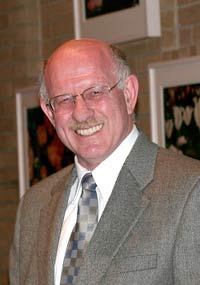
Handy Links
SLAC News Center
SLAC Today
- Subscribe
- Archives: Feb 2006-May 20, 2011
- Archives: May 23, 2011 and later
- Submit Feedback or Story Ideas
- About SLAC Today
SLAC News
Lab News
- Interactions
- Lightsources.org
- ILC NewsLine
- Int'l Science Grid This Week
- Fermilab Today
- Berkeley Lab News
- @brookhaven TODAY
- DOE Pulse
- CERN Courier
- DESY inForm
- US / LHC
SLAC Links
- Emergency
- Safety
- Policy Repository
- Site Entry Form

- Site Maps
- M & O Review
- Computing Status & Calendar
- SLAC Colloquium
- SLACspeak
- SLACspace
- SLAC Logo
- Café Menu
- Flea Market
- Web E-mail
- Marguerite Shuttle
- Discount Commuter Passes
-
Award Reporting Form
- SPIRES
- SciDoc
- Activity Groups
- Library
Stanford
Around the Bay
Dorfan Today: Living the "I" of the ILC — It's Happening Right Here at SLAC
 It's a small pre-enactment of things to come when the International Linear Collider (ILC) is built:
an international collaboration spending all hours of the day and night in the control room and the
experimental hall, working with an high-energy beam with bunches each comprised of 20 billion electrons
and of length roughly equal to ten times the diameter of a human hair (namely about 300 microns).
It's a small pre-enactment of things to come when the International Linear Collider (ILC) is built:
an international collaboration spending all hours of the day and night in the control room and the
experimental hall, working with an high-energy beam with bunches each comprised of 20 billion electrons
and of length roughly equal to ten times the diameter of a human hair (namely about 300 microns).
Forty physicists from 15 institutions are participating in a two-week run, completing today, for ILC beam tests at the End Station A facility here at SLAC. The physicists are testing prototypes that are needed for the ILC machine to measure and help maintain the high quality of beams of electrons and positrons just before they collide with each other in the interaction region of the ILC. The collaborators come from England, the U.S., Germany and Japan and they are represented just as strongly by university researchers as by laboratory researchers.
To make these tests realistic and useful, the researchers need a beam which has the challenging bunch parameters needed for the ILC. There is only one place in the world where that is possible: here at SLAC. The unique SLAC electron beam is transported faithfully to End Station A, where a mature user facility, ideally suited to efficient and effective testing, exists. Thus in the space of only two weeks, a large variety of experimental tests can be achieved.
One such experiment is testing the effectiveness of collimators. Collimators are metal jaws with a small gap which are placed in the path of the beam to shave off stray electrons that would otherwise cause unacceptable backgrounds in particle detectors. Eight sets of collimators of different shapes and materials are being tested to understand what they do to the core of the electron beam. These devices are critical for acceptable operation at the ILC; however, if improperly designed and implemented, the collimators can have deleterious consequences on the key parameters of the beam, and thereby on the required performance of the ILC.
A second experiment is testing a prototype ILC energy spectrometer. Two such spectrometers are needed to measure the energies separately of the electron and positron beams at the very challenging precision of one part per ten-thousand. The ILC will need such precision energy measurements to determine the exact mass of particles produced at the ILC, such as the long-sought Higgs.
Two other studies are for a) a prototype beam position monitor for the ILC Linac and b) diagnostics for measuring the bunch length. Both these developments also have applicability for LCLS. Instrumentation has also been installed in End Station A to characterize the frequency spectrum of electromagnetic "noise" in an interaction region environment and how it might depend on the key parameters of the bunch. Electromagnetic "noise" is inevitable at accelerators and it will interfere with the operations of electronics needed for the accelerator. By characterizing the noise as is being done in these experiments, one can design the electronics to be immune to the noise.
The ILC test beam program will run at End Station A facility for an additional two weeks this summer, running parasitically with the PEP- II and the BaBar physics program.
SLAC has unique, one-of-a-kind facilities and an enormously talented staff that together provide fertile opportunities for testing advanced accelerator concepts and prototype hardware. We are most pleased to host our national and international colleagues to develop the next generation facilities for discovery and exploration.
—Jonathan Dorfan SLAC Today, May 8, 2006